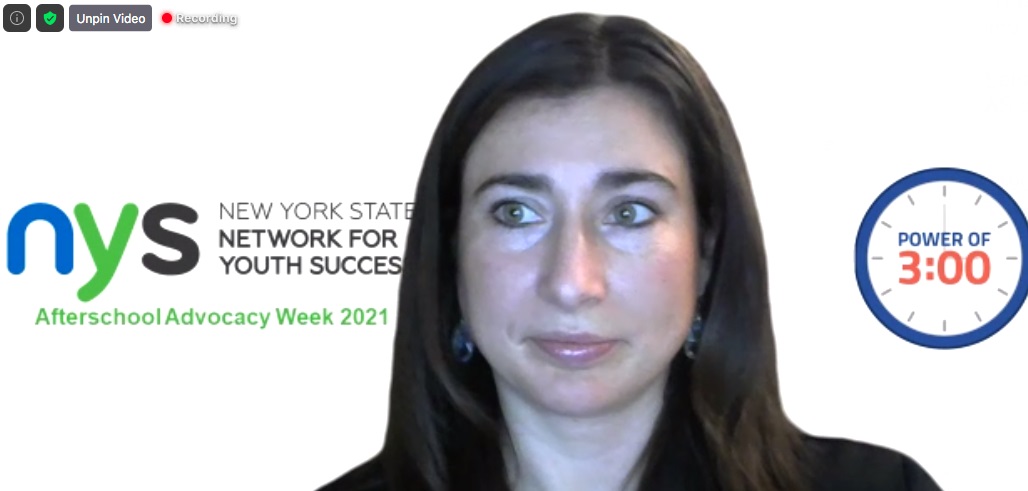
Screenshot
Kelly Sturgis, executive director of the New York State Network for Youth Success, led an online rally bringing together state lawmakers, after-school providers and supporters. She urged full funding for after-school programs in New York.
Across the nation, states are tightening their belts as the pandemic cuts into their budgets. Some are feeling a financial shock similar to that of the 2008 recession.
In New York, the state’s after-school network pushed back against a proposed cut of $5 million to the Advantage After School Program.
The program serves about 17,000 students at 140 sites, said Trudy Morgan, policy director of the New York State Network for Youth Success (NYSNYS). She spoke at an online rally Monday organized by the network that brought together state lawmakers and after-school providers.
New York has a budget shortfall of $15 billion this year and it’s unclear how much federal aid the state can get. The shortfall is larger than usual, but it’s the wrong time to cut funding for out-of-school time programs, said Kelly Sturgis, executive director of NYSNYS.
“At this critical time, we know they’re essential,” she said at the rally. They stand ready to help students recover from learning loss in the pandemic, she said. They also allow parents to return to work, and they connect kids to mentors and provide healthy relationships after “this time of loss and isolation.” They’re embedded in neighborhoods and already positioned to help families recover, she said.
A number of state lawmakers expressed their support.
State Assembly Member Andrew Hevesi said 325,000 children in New York have slid into poverty during the pandemic and 4,000 had lost parents. He is chair of the New York State Assembly Committee on Children and Families.
Long-term thinking is needed to respond to the coronavirus epidemic, he said.
More than half of all states provide some after-school funding either directly or through initiatives that include after-school programs with other uses, according to the National Conference of State Legislatures.
State funding, however, is not necessarily large.
“In our state, very little state funding goes to after-school,” said David Beard, policy director for School’s Out Washington, the after-school network for that state.
And not every state is facing a budget crunch. Washington had a shortfall earlier in the year but shored up using federal COVID-19 relief funds. California has had higher revenues, possibly because of major pockets of wealth such as in the San Francisco Bay Area.
On the other hand, Colorado cut 10% from K-12 education and Georgia cut $950 million, imposing a 10% cut on all state agencies. Nevada lost one-fourth of its jobs early in the pandemic and has cut $130 million from K-12 education. However, it specifically allocated $50 million in federal relief funds to assist students struggling with virtual learning.
Why states are struggling
The problem for most states is that sales tax makes up, on average, about half of all state revenue. The loss of shopping and dining in the pandemic and the closure of business has lowered that revenue.
Then the pandemic created bigger expenses: high unemployment claims as people lost jobs plus higher health care expenses.
Education is the largest expense in many states, although Medicaid is a growing expense.
To deal with these problems, states are looking to the federal government for COVID-19 relief funds. Sturgis calls the funding imperative.





























